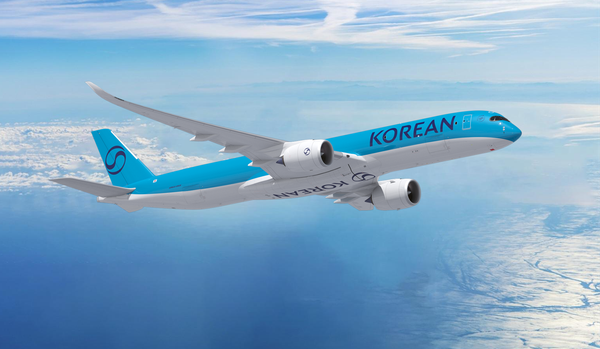One incident on a particular day can change a nation forever. Many Americans remember "the United States" before and "the United States" after, and for young Americans, only "the United States" after…
A back-course of 20 to 30 years reveals that air travel is a contrary experience. The aerial panorama was an uncertain security domain, where manual scanning, limited-featured metal detectors, opened access cockpits, and insufficient security infrastructure were inadequate. During that scrutiny-turbulence era, a terrifying event with unprecedented magnitude has navigated aviation security to an entirely new destination. The colossal security breach has altered aviation security protocols globally, focusing on air travel.
In today's AI-tech-influenced era, boarding a plane is akin to being encrypted by precise security protocols and cutting-edge technologies. Today, the skies are escorted by a remarkable network of machine-controlled security through synchronization. Modern Security protocols for passengers, cockpit, and cargo, from full body scanners to advanced explosive detectors and biometric/facial recognitions, have enhanced Security screening for air transportation. From biometric validation to facial recognition and the automated integration of visa processing, ticketing, and boarding, the aviation security framework has experienced a sound evolution.

ADS-B — or Automatic Dependent Surveillance-Broadcast — and ASDE-X — Airport Surface Detection Equipment, Model X — are relatively new technologies that have lifted aerial security to new horizons.
ADS-B is a surveillance technology used for aircraft tracking. The system broadcasts the airplane's current GPS location and navigation data on a specific radio frequency (1090 MHz in most parts of the world or 978 MHz in certain U.S. airspace). This information is received by ATC (air traffic control) and other ADS-B-equipped airplanes, enhancing the airplane's location awareness. Satellite-based ADS-B provides coverage in remote and oceanic regions where radar installations are not possible.
ASDE-X is also a surveillance system configured to enhance airport surface security. It provides the real-time location of airplane and vehicle movements on the ground. ASDE-X synchronizes location and navigation data information from various sources to create an enhanced image of airport surface movements.

The essential part of ASDE-X is the Surface Movement Radar (SMR), which detects the airplane's positions and ground transport location on the ramp. The radar receives the transmitted radio waves that bounce back from the target on the ground, enabling it to determine the location and movement of these targets.
ASDE-X also receives and integrates the information transmitted by ADS-B-equipped airplanes, further enhancing the accuracy of the airplane's current location. This results in a display on controllers' screens, showing the location of airplanes and ground vehicles on the ramp, along with their movement and identifications.
Mandatory Implementation and Regulation

Worldwide Aviation authorities, like the FAA (Federal Aviation Administration) and EASA (European Union Aviation Safety Agency), have mandated the use of ADS-B on airplanes flying in controlled airspace with effect from January 1, 2020. The FAA has equipped 35 of the busiest U.S. airports with ASDE-X as part of its dedication to enhancing aviation security.
Conclusively, ADS-B and ASDE-X are critical transformative technologies in aviation, providing real-time ground location and surveillance of airplanes, which were available only for airborne airplanes. Aviation authorities are continuously re-regulating the Aviation security screening process to make the sky a safer place to fly!
Flying with Personality: The Hidden Story Behind Aircraft Registrations » 3,200 People Just Ordered This $300,000 Flying Car » Fuel, Faith, and Four Engines: How Emirates Makes the A380 Work »
Comments (0)
Add Your Comment
SHARE
TAGS
INFORMATIONAL Aviation Security Aviation History Airport Security Air Travel Safety Safety Travel FlyingRECENTLY PUBLISHED
 Flying with Personality: The Hidden Story Behind Aircraft Registrations
Just as one would name their car or boat, airlines sometimes give names to their aircraft. While many carriers choose names inspired by well-known cities, landmarks, or historical figures, one airline stands out by adding a unique twist, infused with a touch of classic British flair.
INFORMATIONAL
READ MORE »
Flying with Personality: The Hidden Story Behind Aircraft Registrations
Just as one would name their car or boat, airlines sometimes give names to their aircraft. While many carriers choose names inspired by well-known cities, landmarks, or historical figures, one airline stands out by adding a unique twist, infused with a touch of classic British flair.
INFORMATIONAL
READ MORE »
 Fuel, Faith, and Four Engines: How Emirates Makes the A380 Work
The world's largest passenger airplane — the Airbus A380 Superjumbo — was initially developed to revolutionize intercontinental travel by transporting high volumes of passengers over long distances. However, 20 years later, the A380 has not been the financial success that Airbus hoped it would be.
INFORMATIONAL
READ MORE »
Fuel, Faith, and Four Engines: How Emirates Makes the A380 Work
The world's largest passenger airplane — the Airbus A380 Superjumbo — was initially developed to revolutionize intercontinental travel by transporting high volumes of passengers over long distances. However, 20 years later, the A380 has not been the financial success that Airbus hoped it would be.
INFORMATIONAL
READ MORE »
 Korean Air Orders A350F Freighter
Korean Air has made a strategic decision to convert seven A350-1000 passenger aircraft orders into A350F freighter orders, reinforcing its position in the cargo aviation sector. This move reflects the airline's commitment to enhance operational efficiency and sustainability in response to growing cargo demands.
NEWS
READ MORE »
Korean Air Orders A350F Freighter
Korean Air has made a strategic decision to convert seven A350-1000 passenger aircraft orders into A350F freighter orders, reinforcing its position in the cargo aviation sector. This move reflects the airline's commitment to enhance operational efficiency and sustainability in response to growing cargo demands.
NEWS
READ MORE »



